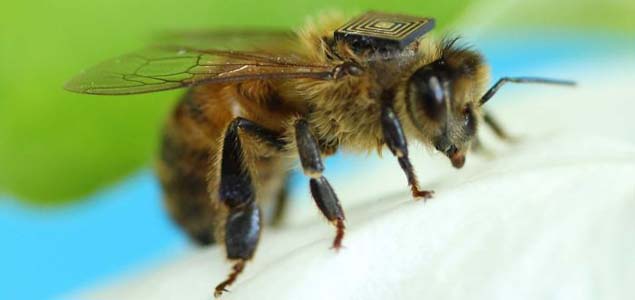The colony collapse disorder has led to the rapid loss of bees and more than 10 million beehives over the last six years.
While the phenomenon had yet to be observed in Australia, scientists hope that data of the movements and habits of several generations of bees will help shed some light on possible threats facing the insects.
Tiny 2.5mm x 2.5 mm sensors will be fitted to the backs of roughly 5,000 bees across a 2-month period.
“The sensors are basically a tag which lets us know how long the bees go for, how many follow them and so on,” Paulo de Souza, lead scientist at CSIRO, told reporters.
Scientists will place the bees in a fridge set to 5 degrees celsius, sending the insects to sleep. Under a microscope, the sensors will then be carefully attached to the bees’ backs before they are returned to the hive.
Bees are routine-based insects and any deviation from their daily routines will be observed using the data collected.
“We will monitor the hives for changes, such as whether the bees are slower to come back or go to other hives,” De Souza explained.
“This will be the largest study ever done of this kind, given that there will be 5,000 sensors. Two months is quite a long time to be studying them, too,” he added.
The CSIRO-led study will observe four hives , each with 50 tagged bees. Two of the hives will be fed a normal diet of nectar and pollen while the other two will be fed the nectar and pollen containing a small amount of pesticide.
The impact of pesticides on bees natural habitat and their ability to forage and produce honey as well as the deadly varroa mite are two possible causes of the global bee decline.
About a third of all food humans eat requires pollination to be produced. Information and insights from the research will therefore be helpful to farmers and fruit grower and could lead to government action, as well as bans on pesticides.
CSIRO also plans to utilise the tiny sensor study to track and observe other winged insects such as flies and mosquitos.
We want to go smaller, maybe to 100 micrometres, although it can be hard to manipulate the sensors at that stage,” De Souza told reporters.
“The bees are amazing – they learn very quickly how to fly with the extra weight. They are very focused on their work. Fruit flies take a little longer.”







